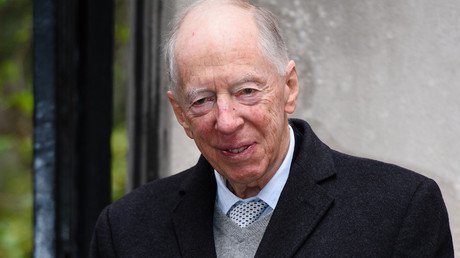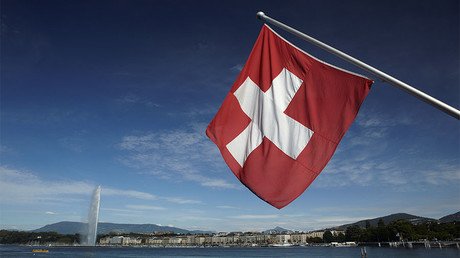US shale sees light at the end of the tunnel
The US oil and gas sector was torn apart during last year’s COVID-19 fueled market mayhem, but it appears that America’s shale patch is back on track, looking as healthy as ever.
The US oil and gas sector is recovering from last year’s market slump. But unlike the previous boom-and-bust cycles, the industry has held off on boosting production and has focused on strengthening balance sheets, repaying loans, and rewarding shareholders. As a result of the rallying commodity prices this year, and most of all, the discipline in capital spending, the US shale patch is now financially stronger. Bankruptcies have been fewer and far apart in recent months, and the energy loan default rate has dropped to the lowest level since the oil market crashed in March and April last year.
In addition, low interest rates have prompted many US oil and gas firms to raise new debt, most of which goes to repaying existing liabilities, not to drilling more wells.
Also on rt.com After years of massive losses, US shale eyes a $60-billion yearUS Energy Defaults Drop Significantly
One indicator shows that the credit quality of the loans and bonds in the US oil and gas sector has significantly improved in recent months.
The energy sector’s trailing twelve-month (TTM) default rate stood at 9.1% in July, Fitch Ratings said in a report on Wednesday. The energy default rate has fallen below the double-digit percentage for the first time since April 2020. The default rate is also considerably down from the 20.3-percent peak in March, Fitch Ratings noted.
Smaller defaults and higher oil prices are set to further push the energy default rate down to 5% by the end of this year, the rating agency says. This year will see smaller defaults compared with as many as four defaults of $1.5 billion-plus size issuers in 2020, according to Fitch Ratings.
To compare, at this time last year, Fitch Ratings was estimating the energy default rate to finish the year 2020 at 18%. In the second quarter of 2020 alone, energy generated $5 billion of defaults.
This year, Fitch Ratings does not expect “many bankruptcies coming in the next few months. Only 2% of our Top Market Concern Loans relates to energy,” Eric Rosenthal, Senior Director of Leveraged Finance at Fitch Ratings, told Forbes’ Senior Contributor Mayra Rodriguez Valladares.
Defaults on bonds have also significantly dropped this year, according to Fitch Ratings.
“Energy makes up only 10% of our Top Market Concern Bonds list, down from 57% as of one year ago. There has been only $3.2 billion of YTD high yield energy defaults compared with $14.4 billion for the same period in 2020,” Rosenthal told Rodriguez Valladares.
Energy Bankruptcies Slow Down
This year, the default rate is considerably down, as companies with unsustainable liabilities have already filed for bankruptcy over the past year, while the others are using record cash flows to pay down debts.
The number of North American producers that filed for bankruptcy protection in the first quarter of 2021 reached the highest number for a first-quarter since 2016, yet the wave of bankruptcies has significantly slowed since the peaks in the second and third quarter of 2020, law firm Haynes and Boone said in its latest tally to March 31. Even though the number of first-quarter 2021 bankruptcies was the highest for a Q1 since 2016, it showed the trend of slowing filings after 18 oil and gas producers filed in the second quarter of 2020 and another 17 in the third quarter, the two quarters in which the oil price crash and the crisis were most severely felt by indebted producers.
Also on rt.com California Governor Newsom, facing recall election, vows to stop issuing fracking permits by 2024 and phase out oil extractionThe US Shale Patch Is Borrowing Again
US oil and gas firms are taking advantage of the high oil prices and historically low-interest rates to seek financing.
Higher oil prices and low-interest rates have prompted listed independent US oil producers to raise in March the most financing via debt and equity issues since August last year, the EIA said in April.
This time around, the borrowed money is being used for repayment of previously drawn credit facilities or bonds, not for relentless drilling of new wells and chasing record production growth.
“Since crude oil prices began increasing, US crude oil producers have been raising debt and equity to refinance debts, resume drilling activities, or purchase acreage,” the EIA said.
Low corporate bond yields have also contributed to lower interest rates on new bonds and reduce the cost of issuing debt, the EIA noted.
Historically low interest rates give additional incentives to US shale drillers to raise new debt and refinance existing liabilities. Currently, it’s as cheap for the US energy sector to raise new debt as it was seven years ago, when oil was $100 per barrel, according to Bloomberg Intelligence.
How Long Will Discipline Hold?
So far this year, US oil and gas firms have been sticking with promises of capital discipline and prefer to show investors the money to drilling themselves “into oblivion,” as Harold Hamm warned back in 2017.
Higher oil prices and expected record cash flows could heal the balance sheets of many shale producers this year.
Even if US shale wanted to significantly raise production in response to $70 oil, it would take at least nine months to see a meaningful jump in output, Rystad Energy said in an analysis earlier this month.
One executive at an E&P firm may have summed up this year’s motto of the US shale patch in the following comment in the Dallas Fed Energy Survey Q2 published at the end of June:
“Don’t take the bait, drillers: Stay capital disciplined and enjoy the higher prices for your product.”
This article was originally published on Oilprice.com














